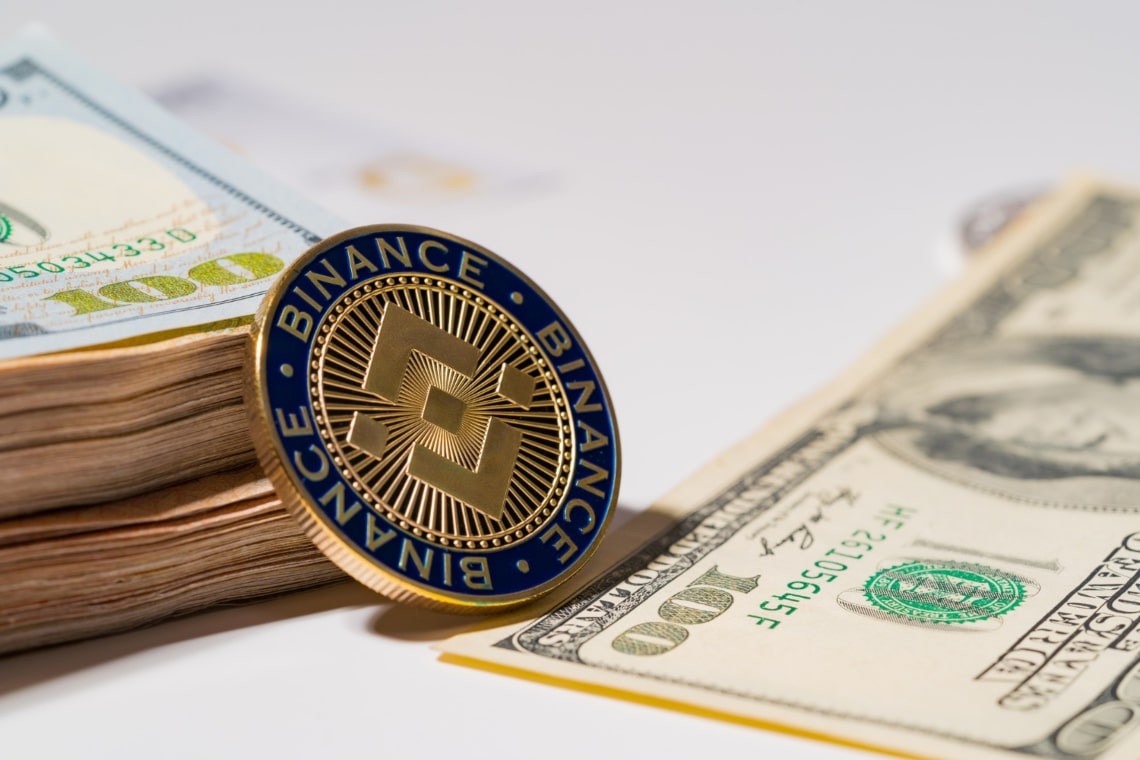Binance.US announced that it has enabled USDT stablecoin on the Polygon and Avalanche networks.
Summary
Binance.US implements USDT support on Polygon and Avalanche networks
With an announcement on Twitter, Binance.US revealed new updates regarding the USDT stablecoin. The exchange would now also allow USDT transfers on Polygon and Avalanche networks.
The announcement comes just a few days after the one regarding BUSD, Binance’s stablecoin, also on the two blockchain networks:
“BUSD is available on multiple blockchains, including Ethereum, BNB Smart Chain, and BNB Beacon Chain. Now BUSD is also available on Avalanche and Polygon. BUSD support on Avalanche and Polygon provides traders with a fast and safe way to transfer the USD-backed stablecoin across different platforms. All users are now able to explore the Avalanche and Polygon ecosystem with BUSD more safely and efficiently. In the future, the BUSD team is committed to bringing more use cases into its ecosystem.”
$USDT transfers on #Polygon & #Avalanche networks are now available!@0xPolygon $MATIC is an #Ethereum Layer-2 scaling platform that enables fast transactions & lower fees.
@avalancheavax $AVAX is a #blockchain platform built with scalability in mind.
👉https://t.co/aKw31jKQ6X pic.twitter.com/eVrsjN0Rzz
— Binance.US 🇺🇸 (@BinanceUS) September 22, 2022
And now comes this news precisely on the 4-year anniversary of the US branch of the world’s leading exchange. After all, the exchange founded by Chinese-Canadian Changpeng Zhao, globally already supports USDT transfers on the Polygon and Avalanche networks.
It currently supports BSC, BNB, ETH, TRX, AVAX, XTZ and SOL. But now this capability will also occur for those using the Binance.US exchange.
Binance’s autoconversion to BUSD
This news comes after Binance declared on 5 September that trading services for USD Coin [USDC], USDP Stablecoin [USDP] and TrueUSD [TUSD] will be discontinued. As of 3 AM (UTC) 29.09, these stablecoins will be automatically converted back to BUSD by the exchange.
The move surprised many traders, because it effectively excludes USDC, which is the second largest stablecoin by capitalization with $52 billion, (compared to $67.5 for the first Tether) and in fact represents a blow to companies issuing stablecoins, such as Circle, which together with Binance’s rival exchange (this according to some may also be one of the reasons for this resounding decision) Coinbase issues the second largest stablecoin in the world by capitalization.
The company said that it was making this decision, which surprised and worried many of its users, to increase market liquidity and capital efficiency for its users, warning them not to transact with these stablecoins anymore when approaching 29 September so as not to risk losing money.
And it is even more surprising when one considers what Binance founder Zhao said again about stablecoins, which he has always considered to be a key component of the cryptocurrency market, as they provide about 65% of the necessary liquidity.
CZ’s comments regarding the MiCA
A few days ago, he welcomed via Twitter Europe’s decision not to include more restrictive laws specifically on stablecoins in its regulatory framework approved in July on cryptocurrencies, the MiCA.
Good news from Europe. The latest draft of MiCA removed previous restrictions on non-EUR stablecoins. Liquidity is the best protection for users.
— CZ 🔶 BNB (@cz_binance) September 21, 2022
This restriction on USDC and the other two stablecoins therefore seemed somewhat contradictory to what Zhao has always said, but at the same time, the stablecoin market also has to deal with the great downturn in the markets and the failure of Terra and its algorithmic stablecoin UST, which had rattled the entire stablecoin market for a few days, starting with the behemoth Tether, which occupies the third place in the ranking of the most capitalized cryptocurrencies, after Bitcoin and Ethereum.
Binance helps USDT expand on Polygon and Avalanche blockchains
Now comes this new announcement that expands USDT’s stablecoin capabilities to the two networks Polygon and Avalanche. In short, the former is an Ethereum-based blockchain and its cryptocurrency is called MATIC. Born in 2017 from the idea of three Indian developers, it aims to solve the problem of blockchain scalability. The token was officially launched in 2019, with an IEO of its own on Binance.
In 2021 it changes its name from Matic to Polygon, moving from blockchain layer 2 to a full-fledged framework for developing scalable dApps. Today it is now one of the benchmark blockchains for anyone developing decentralized applications using Ethereum.
Avalanche has long been considered in the same league as Cardano and Solana, one of the so-called Ethereum killers, due to their more cost-effective, scalable and sustainable characteristics, compared to Ethereum. It is a blockchain that links different blockchains together, which was born in 2020 for decentralized finance.
On 27 May, Tether had announced in grand style the launch of its USDT stablecoin on the Polygon layer 2 blockchain, to address precisely the excessive transaction costs of the Ethereum network, considering that the company had noticed at that time more transactions on the Tron network, compared to the Ethereum network.
In the past, Tether has been the subject of an indiscretion by the WSJ, most recently about the reliability and extent of its available reserves, which some say are not 100% backed by liquid products, as they should be.
Two days ago, news had come out that a US judge had asked the company to officially publish all its reserves, as a guarantee for users and the market.
The company responded:
“We had already agreed to produce documents sufficient to establish the reserves backing USDT, and this dispute merely concerned the scope of documents to be produced. As always, we look forward to dispensing with plaintiffs’ baseless lawsuit in due course.”
Stating that this is a claim dating as far back as October 2019, which would have been artfully exhumed by the misinformation that has long been circulating around Tether and the stablecoin industry in general.




